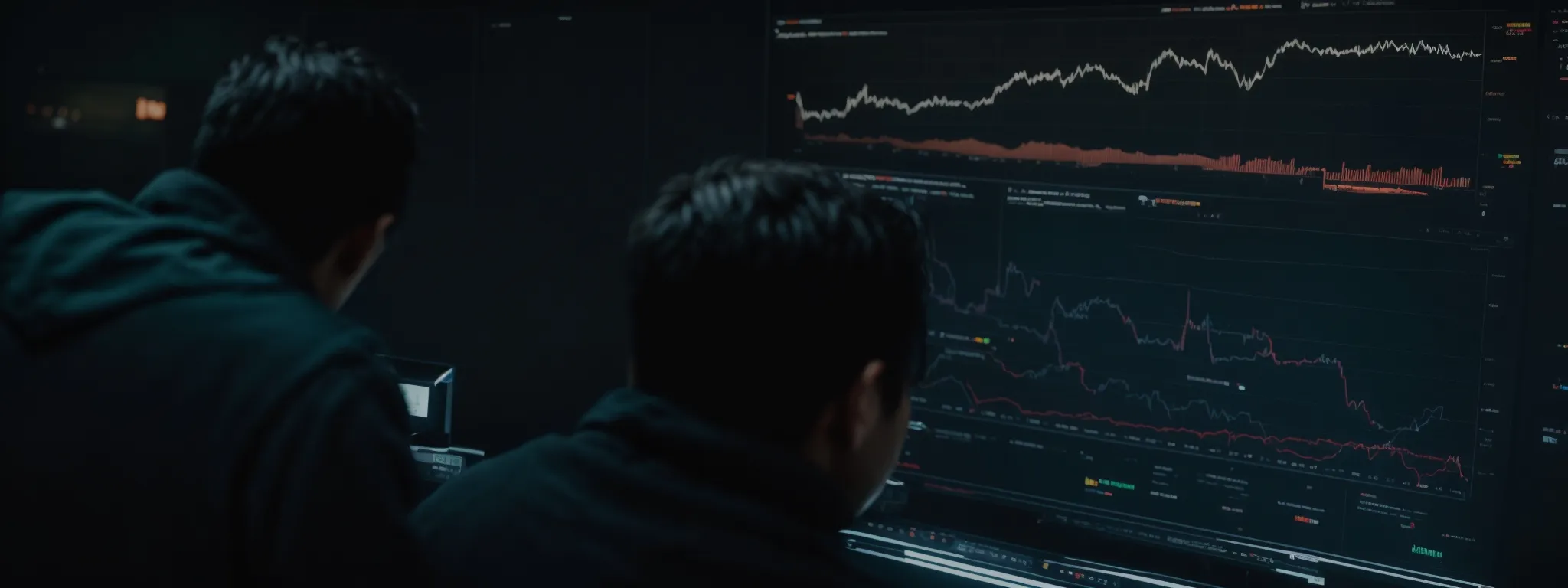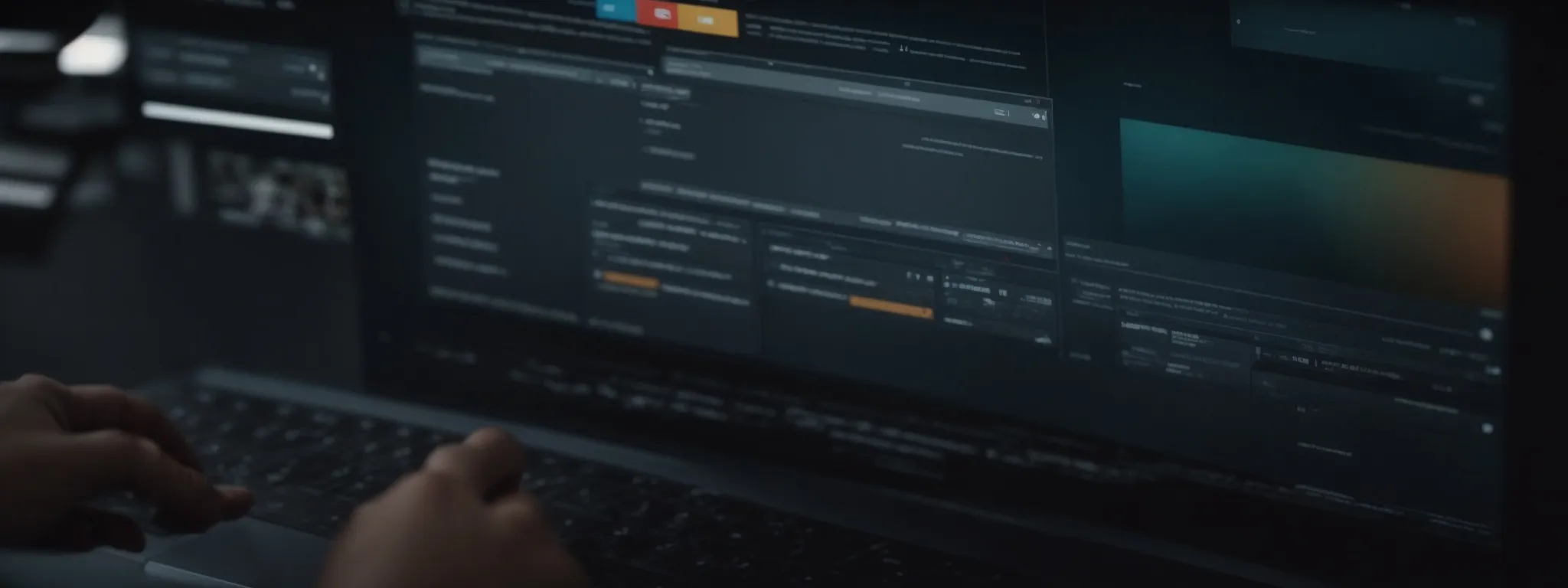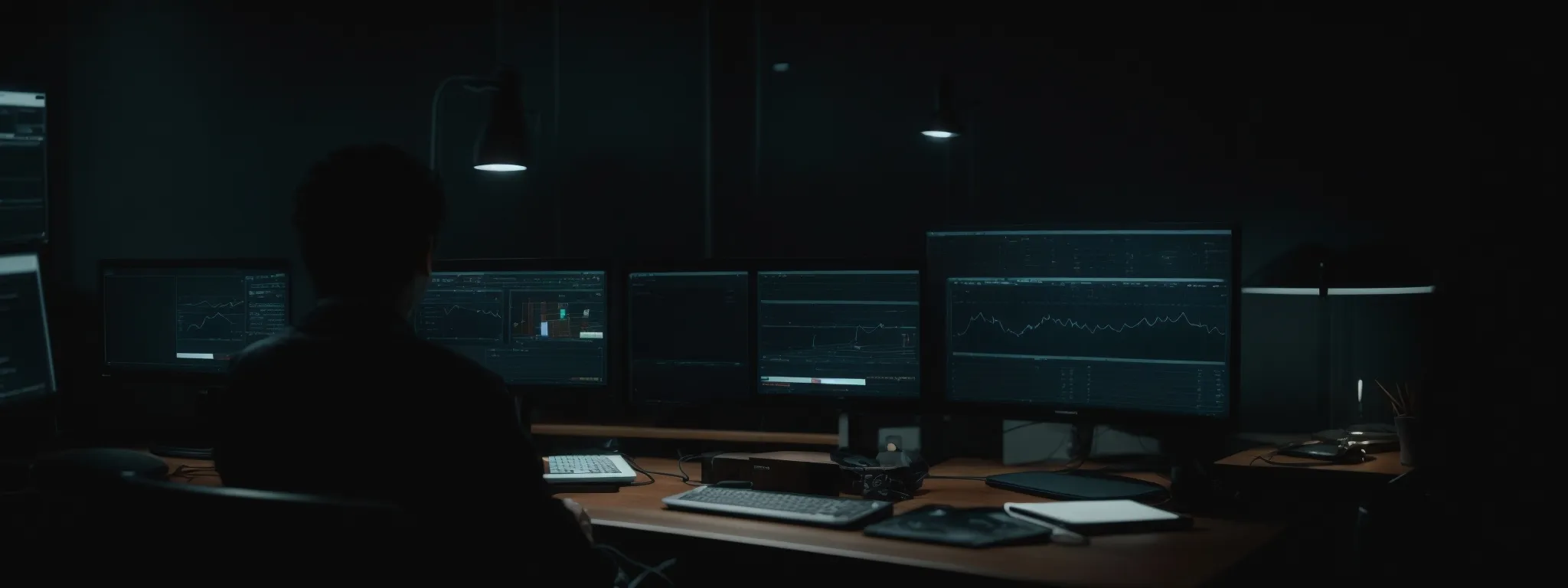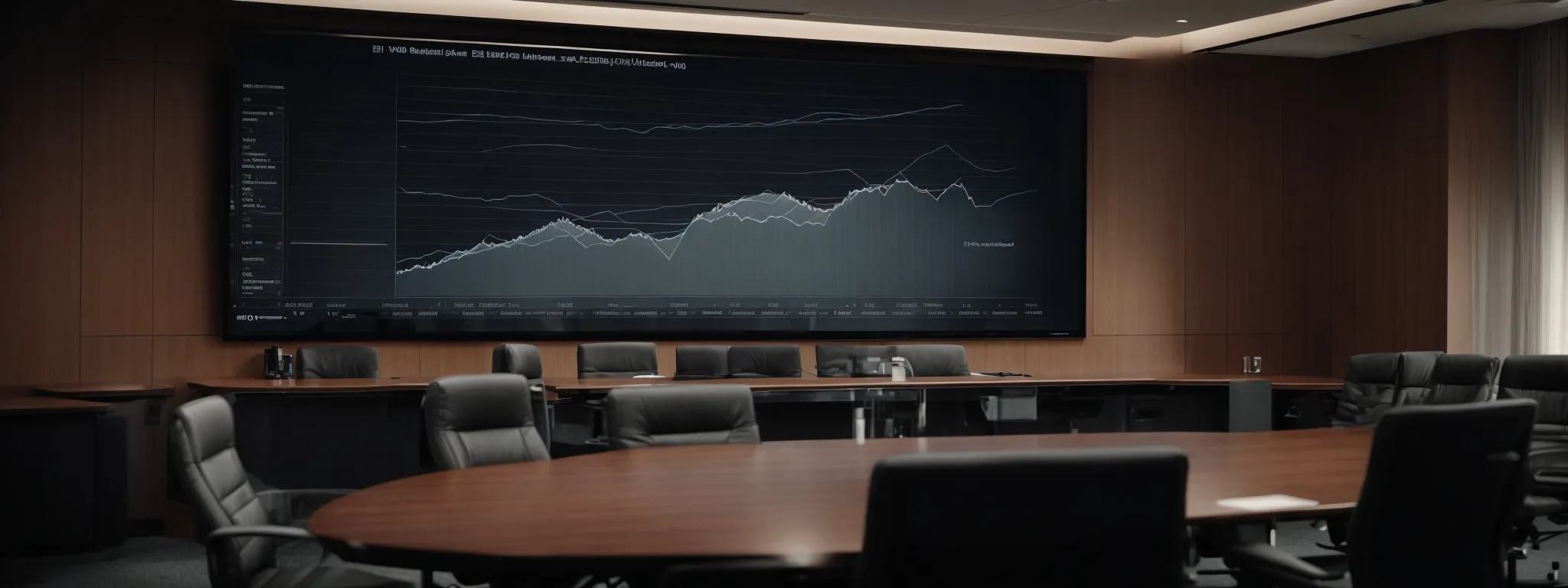John Mueller on SEO for Dark Mode Sites
Understanding SEO for Dark Mode Sites With John Mueller’s Insights As the digital landscape evolves, the preference for dark mode interfaces has gained traction, prompting savvy site […]
Understanding SEO for Dark Mode Sites With John Mueller’s Insights
As the digital landscape evolves, the preference for dark mode interfaces has gained traction, prompting savvy site owners and developers to ponder the implications on search engine optimization.
John Mueller of Google has addressed inquiries regarding dark mode’s impact on SEO, bringing to light considerations that go beyond aesthetics to include user experience and search visibility.
Informed by Mueller’s insights and the nuances of Google’s algorithm updates, optimizing websites with dark mode features requires a tailored approach to ensure visibility in Google search results.
In this article, we delve into the interplay between dark mode design and SEO, unveiling strategies to leverage this modern mode setting for enhanced online presence.
Keep reading to discover how a dark mode setup might affect your site’s SEO trajectory and the actions you can take to capitalize on this growing trend.
Key Takeaways
- Dark Mode Integration in Web Design Is a User Experience Enhancement Rather Than a Direct SEO Ranking Factor
- Implementing Dark Mode Should Be Done Thoughtfully to Maintain Content Visibility and Accessibility
- Site Owners Must Ensure Technical SEO Elements Are Not Disrupted When Dark Mode Settings Are Toggled
- Dark Mode’s Impact on User Engagement Metrics Like Dwell Time and Bounce Rates May Indirectly Affect SEO
- Continuous Adaptation and Rigorous Testing of Dark Mode Features Are Crucial for Preserving a Site’s SEO Performance
Exploring John Mueller’s Stance on Dark Mode SEO

The evolving landscape of web design has led to a proliferation of dark mode interfaces, prompting a crucial dialogue about its implications for SEO.
LinkGraph, a proponent for forward-looking SEO strategies, pays close attention to industry experts like John Mueller for guidance on such topical nuances.
As the search community navigates the complexities of Google’s algorithms and seeks to optimize user experience, Mueller’s insights shed light on how search engines interpret dark mode settings and their potential impact on search results.
This discourse delves into the intricacies of dark mode’s compatibility with SEO, while aligning with Google’s evolving perspective as outlined by Mueller, thereby ensuring that both users and search engine optimization experts can benefit from an enhanced understanding of this modern web design trend.
Analyzing John Mueller’s Comments on Dark Mode Compatibility
John Mueller, a recognized authority at Google, has offered valuable insights regarding the integration of dark mode in web design and its interplay with SEO. His analysis suggests that while dark mode presents aesthetic and usability benefits, it holds no direct influence over search rankings.
However, Mueller emphasizes that site owners should implement dark mode thoughtfully to ensure a consistent user experience across various devices and environments:
- Ensuring readability and accessibility regardless of mode setting
- Maintaining design consistency between light and dark mode setups
- Considering the impact on elements like title tags and meta descriptions
How Google Perceives Dark Mode in Terms of SEO
LinkGraph, as a dynamic force in the field of search engine optimization, closely monitors the insights of Google’s John Mueller on the interface preferences of today’s digital landscape. According to Mueller, Google’s interpretation of dark mode settings does not directly sway Google search results, indicating that the adoption of a dark mode interface is more a matter of user experience than a technical SEO advantage.
In relevance to SEO best practices, Mueller underscores the importance of ensuring that any mode setting, including dark mode, does not hinder the site’s accessibility or obstruct the visibility of critical content. In essence, Google’s algorithms focus on content quality and accessibility, regardless of the aesthetic choices a site owner may embrace, aligning with the core tenets of LinkGraph’s philosophy regarding effective SEO strategy.
User Experience Considerations Mentioned by Mueller
In discussing the impact of dark mode on search engine optimization, John Mueller highlights the critical role user experience plays in the equation. LinkGraph echoes this sentiment, understanding that while mode settings may not directly influence Google rankings, a proactive approach to ensuring the seamless functionality of web features in both light and dark modes can significantly enhance user satisfaction.
LinkGraph leverages Mueller’s commentary to advise clients on optimizing websites for optimal readability and navigation in any viewing preference. This adaptation bolsters the connection between a brand’s online presence and its audience by providing a user-friendly interface, which in turn can positively affect metrics such as time on site and bounce rates — indirect factors that search engines may consider when assessing a page’s value.
Impact of Dark Mode on SEO Performance

The exploration of dark mode’s influence extends beyond aesthetics, prompting a discerning evaluation of its potential benefits within the realm of search engine optimization.
LinkGraph, leveraging the expertise of Google’s own John Mueller, strives to decode the subtleties that dark mode adoption may introduce to the SEO landscape.
The focus revolves around discerning whether a dark mode user interface could conceivably bring about any tangible advantages or noticeable alterations in search ranking performance, fostering an environment conducive to tactical decision-making for site owners and SEO specialists alike.
Understanding Potential SEO Benefits of Dark Mode
In the realm of SEO, the utilization of dark mode can be viewed as an extension of web design’s role in enhancing user experience. LinkGraph identifies that, while not a direct ranking factor, implementing dark mode may lead to an improved user experience, potentially lowering bounce rates and increasing time on page, which are indicators that search engines might consider positively in their ranking algorithms.
Furthermore, John Mueller’s insights imply that a well-executed dark mode option can lead to better accessibility, particularly for users with light sensitivity or those browsing in low-light environments. LinkGraph understands this to mean that an accessible site in any mode is likely to attract and retain a broader audience, contributing to the overall success of a website’s SEO efforts.
Investigating Any Search Ranking Changes With Dark Mode Adoption
In LinkGraph’s dynamic approach to SEO, a methodological surveillance is maintained to ascertain whether the introduction of dark mode has a substantive effect on search engine rankings. Site owners, in tandem with SEO experts, investigate correlations between mode setup and its ramifications on the visibility within search engine results pages (SERPs).
Conclusive data stemming from search engine journals and digital marketing surveys serves to illuminate the actual impact of dark mode adoption on rankings:
- Analysing user behavior and engagement metrics for sites before and after dark mode implementation
- Evaluating the consistency of search engine results positioning in light versus dark mode setups
- Monitoring feedback from user experience interactions to assess potential improvements or deterrents
As data aggregates, LinkGraph fashions these insights into actionable strategies, bolstering their SEO services to adapt to whatever influence dark mode may wield on search visibility.
Optimizing Dark Mode Sites for Better SEO Based on Mueller’s Advice

In the digital age where visual preferences play a pivotal role in user engagement, the implementation of dark mode on websites has risen to prominence, leading to pertinent discussions on its effect on search engine optimization.
LinkGraph, drawing from the expertise of notable figures like John Mueller, facilitates a robust analysis of the nuances involved in tailoring dark mode experiences for SEO.
This introductory segment paves the way for a deep dive into the best practices for incorporating dark mode on websites, ensuring content is readily accessible regardless of a user’s mode preference and addressing the technical nuances to enhance dark mode compatibility with SEO efforts.
Best Practices for Implementing Dark Mode on Websites
Adhering to John Mueller’s insights for deploying dark mode on websites, LinkGraph champions the best practices that go beyond mere aesthetics. Ensuring that the switch to dark mode does not disrupt the visibility of essential elements such as text and interactive features is crucial for maintaining SEO integrity and user engagement.
LinkGraph highlights a strategic approach to dark mode implementation, emphasizing that thorough testing across different devices and operating systems is paramount. This ensures consistency in user experience, a factor that search engines value when determining the relevance and quality of a web page:
| SEO Factor | Action for Dark Mode | Impact on User Experience |
|---|---|---|
| Text Visibility | Maintain contrast and readability | Enhanced readability across modes |
| Interactive Elements | Ensure functionality in both modes | Consistent interaction for users |
| Device Compatibility | Test on multiple devices/OS | Seamless experience irrespective of device |
Ensuring Content Visibility in Dark Mode Settings
In alignment with John Mueller’s recommendations, LinkGraph underscores the necessity of ensuring the visibility of key content, regardless of a user’s mode preference. A discerning focus on maintaining high contrast levels and legibility in text ensures that, when websites transition to dark mode, the essence of the message remains clear, fostering an uninterrupted experience for searchers and fortifying SEO efficacy.
LinkGraph advocates for meticulous evaluation of visual elements within dark mode settings to uphold content prominence. This entails a strategic review of images, charts, and videos, alongside textual components, validating their adaptability to dark mode aesthetics without compromising informational intent, thereby preserving the site’s ranking potential and user engagement quality.
Technical Aspects of Dark Mode SEO Optimization
John Mueller’s guidance on dark mode emphasizes the importance of technical precision in SEO optimization. LinkGraph, by leveraging search engine insights, maintains that web developers should meticulously ensure that automated dark mode toggles do not inadvertently alter vital SEO elements such as structured data, which must remain consistent to uphold a website’s clarity for search engine crawlers.
Furthermore, attention to detail in mode settings extends to the technical underpinnings of website code responsible for dark mode activation. LinkGraph advises that it is crucial to implement CSS and JavaScript with care, guaranteeing that the switch between modes does not disrupt the website’s underlying SEO framework, including meta tags and canonical links, thus preserving a site’s search engine visibility and effectiveness.
Dark Mode User Experience and Its SEO Relevance

In the intricate world of Search Engine Optimization, user engagement stands as a crucial metric, intricately interwoven with the success of SEO.
John Mueller brings to light the pivotal role that user interactions play in determining the perceived value of a site by search engines—a value that may fluctuate when web design incorporates elements like dark mode.
As digital professionals and site owners contemplate the utilization of dark mode, it is imperative to discern its influence on user behavior and the subsequent ramifications for a site’s search engine ranking.
This section will navigate the intricacies of user experience in dark mode interfaces, examining its potential effects on engagement and the broader implications for SEO strategy.
The Role of User Engagement in SEO as Discussed by Mueller
John Mueller has often highlighted the salience of user engagement in the realm of SEO, identifying it as a barometer for the value a website offers to its visitors. LinkGraph recognizes Mueller’s perspective, understanding that engagement metrics such as dwell time and bounce rate, while not direct ranking factors, offer critical signals to search engines about a site’s relevance and user satisfaction.
With user experience at the forefront of SEO considerations, Mueller’s insights affirm the necessity of examining how dark mode influences interaction and retention. Through LinkGraph’s lens, optimizing for user engagement in dark mode becomes a nuanced exercise in balancing aesthetic innovation with functional clarity, ever aligning with the evolving landscape of search engine algorithms and user preferences.
Measuring the Impact of Dark Mode on User Behavior
LinkGraph takes a data-driven approach to unveil how dark mode influences user behavior, with a clear focus on analytics that reveal engagement patterns. Tracking metrics such as session duration and pages per session enables the company to assess if users interact differently with websites that offer a dark mode option, thereby providing insights into the effectiveness of this design choice.
Through rigorous testing and analysis, LinkGraph discerns variances in user actions between light and dark mode user interfaces. This empirical investigation examines not only quantitative data but also qualitative user feedback to gauge the degree to which dark mode impacts the overall browsing experience and, by extension, informs SEO strategizing for optimal performance.
Assessing Dark Mode Features for Enhanced SEO Strategies

Modern website design trends, such as the integration of dark mode, have sparked crucial conversations about their repercussions on the all-important terrain of search engine optimization.
LinkGraph, underpinned by the expertise of SEO connoisseur John Mueller, imparts wisdom on harnessing dark mode’s visual appeal to potentially bolster SEO performance.
This section delves into integrating dark mode features with a keen eye on search optimization and adapts existing SEO tactics to accommodate sites offering dark mode, paving the way for nuanced strategies that harmonize aesthetic preferences with algorithmic favorability.
Integrating Dark Mode Features for Search Optimization
Incorporating dark mode features into a website requires a delicate balance between aesthetic appeal and search engine requirements. LinkGraph’s SEO services provide the expertise necessary to navigate this balance, ensuring that the addition of dark mode does not compromise the site’s search optimization potential.
By methodically integrating dark mode design elements, LinkGraph ensures that critical SEO features such as structured data and metadata are shielded from any adverse effects. This approach guarantees that a website retains its visibility and effectiveness within search engine results, regardless of the user’s preferred mode:
| SEO Feature | Dark Mode Integration Strategy | Expected Outcome |
|---|---|---|
| Metadata | Ensure no disruption during mode switch | Consistent SEO performance across modes |
| Structured Data | Confirm structural integrity in all modes | Clarity and context for search engines |
Adapting SEO Tactics for Sites Offering Dark Mode
As digital environments evolve, LinkGraph remains astute to the necessity for SEO tactics to adapt alongside these changes, particularly with the integration of dark mode on websites. Recognizing the guidance from Google’s John Mueller, the company formulates strategies that prioritize seamless user interactions and search engine crawlability, even when websites alternate between dark and light themes.
Integrating dark mode requires an astute understanding of design principles and their intersection with SEO best practices. LinkGraph’s adeptness allows for the honing of such practices, ensuring that visual transitions between modes do not impede the accessibility and recognition of vital content by search engines, safeguarding a website’s digital presence and ranking competency.
Future Projections of SEO in the Era of Dark Mode Interfaces

As the proliferation of dark mode interfaces continues to alter the digital landscape, industry experts, including John Mueller, provide essential foresight into how such aesthetic preferences might shape the future of SEO.
Innovations in web design are inextricably linked to the algorithms that define visibility and ranking, prompting SEO professionals to anticipate and prepare for how enhancements in dark mode could redefine optimization strategies.
This critical understanding not only speaks to the adaptive nature of SEO but also underscores its resilience in the face of evolving user interfaces, aligning with LinkGraph’s commitment to strategic forward-thinking in search engine optimization services.
John Mueller’s Predictions on SEO Trends With Dark Mode
John Mueller has not specifically made definitive predictions on how dark mode will influence SEO trends, yet he continually emphasizes the importance of user experience as a guiding factor for search engines. LinkGraph, in interpreting Mueller’s approach, recognizes that enhancing user satisfaction through dark mode adoption may indirectly contribute to SEO success by fostering positive engagement signals that search algorithms may favor.
As an SEO expert, Mueller’s discussions hint at search engines’ growing sophistication in aligning with user preferences, including interface choices like dark mode. LinkGraph understands this to suggest that while dark mode itself is not a ranking factor, the ongoing refinements in search algorithms will likely continue to account for the user experience enhancements it affords, potentially influencing broader SEO practices in the future.
Preparing for Upcoming SEO Changes With Dark Mode Advancements
LinkGraph remains vigilant, keenly observing the intertwining of dark mode developments with SEO. As search engines refine their algorithms, the team at LinkGraph prepares clients for the subtle yet significant shifts these changes might herald, ensuring their digital marketing strategies stay ahead of the curve.
Staying abreast of Mueller’s insights, LinkGraph crafts responsive strategies that anticipate how dark mode preferences may affect user engagement and, consequently, SEO metrics. Their focus remains steadfast on providing clients with SEO services that are adaptable to the ever-changing preferences and functionalities of modern web users.
Conclusion
In conclusion, understanding SEO for dark mode sites through John Mueller’s insights is critical for those who aim to create websites that are both aesthetically pleasing and optimized for search engines.
Mueller clarifies that while dark mode does not directly affect search rankings, it plays a significant role in user experience, which can indirectly influence SEO performance.
Sites must maintain content readability and consistency across different modes, ensuring that essential elements such as title tags and meta descriptions are not compromised when switching between light and dark themes.
LinkGraph, drawing upon Mueller’s guidance, advises that an effortless dark mode experience and technical precision can lead to increased user engagement—indicators that search engines might positively regard.
Adapting SEO tactics to include dark mode features is essential to meet user preferences and maintain search visibility, showing that strategic SEO in the era of dark mode interfaces is not just about keeping up with design trends, but also enhancing overall user satisfaction.












































































